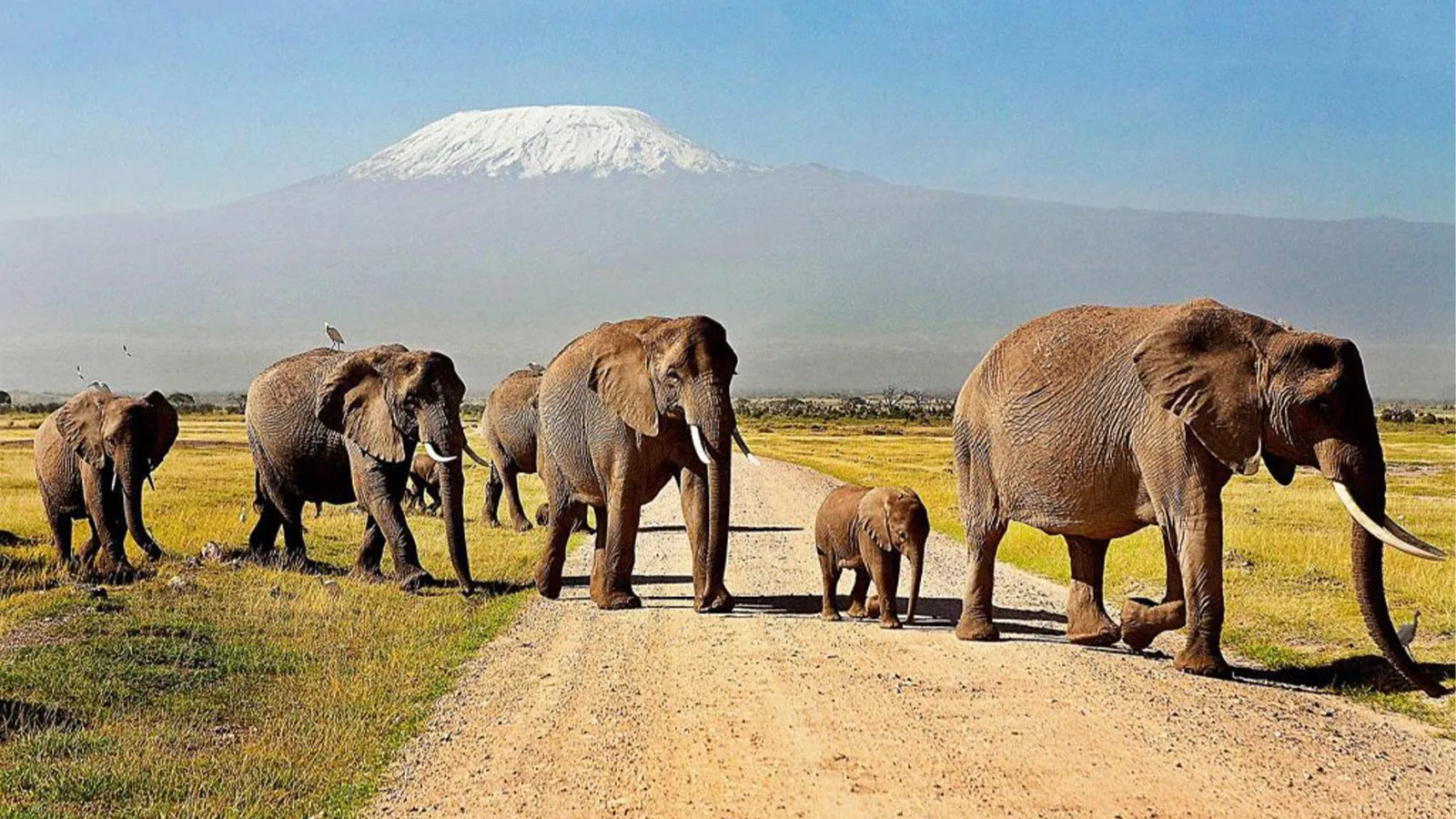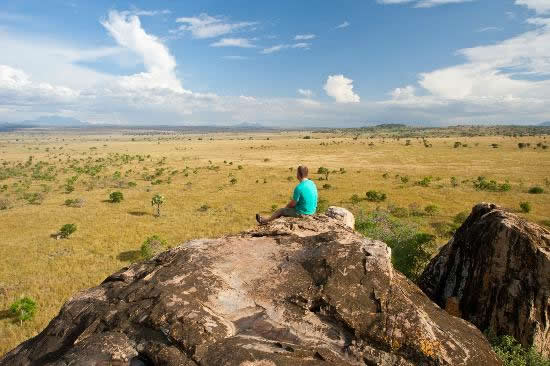Where To See Elephants in Africa – The Top 5 Best Safari Destinations To See Elephants
An Icon of the Wild: The Soul of Africa on Four Majestic Legs
There is perhaps no creature more deeply symbolic of the African wilderness than the African elephant. Towering, intelligent, and profoundly emotional, elephants do not simply walk the land—they define it. With their massive silhouettes, long sweeping trunks, and silent, deliberate movements, they carry with them the legacy of time itself. To see an elephant in the wild is not merely a safari sighting; it is a moment of deep human connection with nature’s rawest, most magnificent force.
Africa’s elephant populations span across diverse ecosystems—roaming through dense forests, across arid deserts, along riverbanks, and into open savannas. But not all destinations offer the same kind of elephant experience. Certain regions of the continent provide exceptional opportunities to encounter these majestic beings in large numbers, dramatic settings, and often at close range. Some destinations boast thousands of elephants on migration routes. Others offer quiet, personal moments as individuals drink from mirrored waterholes or travel in matriarch-led herds across vast golden plains.
This article uncovers the top five destinations in Africa where sightings of elephants transcend expectation—where the grandeur, complexity, and intimacy of elephant life can be witnessed in the purest and most meaningful forms.
Chobe National Park, Botswana – The Elephant Capital of the World
At the heart of northern Botswana, where the Chobe River meanders along Namibia’s border, lies Chobe National Park, renowned across the globe as the single greatest stronghold for elephants in Africa. It is estimated that over 120,000 elephants call this region home—an extraordinary concentration unrivaled anywhere else on Earth.
Elephants in Chobe are not just abundant—they are central to the ecosystem. During the dry season, immense herds converge along the riverbanks, forming a natural theatre of movement, interaction, and survival. The air becomes alive with the sounds of splashing, trumpeting, and playful jostling as families of elephants bathe, drink, and dust themselves in the golden light of dusk.
What makes Chobe so unique is the proximity it offers. Whether gliding silently on a riverboat cruise or navigating the floodplain in a 4×4 safari vehicle, guests are brought within arm’s reach of elephant herds in their most relaxed state. From calves learning to use their trunks to matriarchs standing guard, each encounter reveals the deep social structure and emotional intelligence of these creatures.
The park’s distinct seasonal rhythm ensures that the spectacle evolves throughout the year, while its relatively undeveloped terrain allows for experiences that feel raw, wild, and untouched. In Chobe, the elephant is not a rare prize—it is the heartbeat of the land.
Amboseli National Park, Kenya – Giants Beneath the Shadow of Kilimanjaro
Few scenes in Africa rival the vision of elephants marching across golden savannahs with the snow-capped peak of Mount Kilimanjaro looming in the background. This breathtaking tableau unfolds daily in Amboseli National Park, a region located in the southern reaches of Kenya near the Tanzanian border.
Amboseli is famed for its open landscapes, sparse vegetation, and shallow swamps—conditions that make elephant sightings not only frequent but visually spectacular. The elephants here are among the most studied in Africa, forming part of a long-standing research project that has cataloged generations of individuals. Their sheer size, long ivory tusks, and graceful movements against the photogenic backdrop make for one of the continent’s most iconic safari scenes.
Because of the park’s relatively small size and its reliable water sources, elephants tend to concentrate around marshy areas, particularly during dry spells. This draws them in from surrounding regions, resulting in mesmerizing daily gatherings of dozens, sometimes hundreds, of elephants, often moving in long, winding lines with purpose and coordination.
Beyond the visual impact, what distinguishes Amboseli is the emotional resonance of its elephants. Here, researchers and rangers speak of elephants with familiarity and reverence. Each herd is known, each matriarch named. The result is not just a safari of sights, but a safari of stories—an encounter not just with a species, but with individuals and families whose lives unfold under the gaze of Kilimanjaro.
Tarangire National Park, Tanzania – The Hidden Giant Sanctuary
Often overshadowed by its more famous northern Tanzanian counterparts such as the Serengeti and Ngorongoro, Tarangire National Park remains one of the most underestimated elephant sanctuaries in Africa. Nestled along the Tarangire River and bordered by ancient baobab trees, this park serves as a dry-season refuge for thousands of elephants, creating a phenomenon that remains blissfully under the radar.
Between June and October, the river becomes the primary lifeline, drawing herds from surrounding regions in search of water. During this period, Tarangire boasts one of the highest elephant concentrations per square kilometer in East Africa. Unlike some of the more sprawling parks, Tarangire’s compact geography ensures close encounters with the animals as they migrate through woodlands, drink at waterholes, and shade themselves under massive baobabs.
What sets Tarangire apart is not just its abundance but its atmosphere. The landscape, dotted with termite mounds and marula trees, radiates an ancient, almost mythical quality. Against this backdrop, elephants appear not just as part of the environment, but as its architects—shaping the land with each step and trunk pull.
Because of its relatively low visitor numbers, guests in Tarangire often find themselves alone with herds, able to observe undisturbed behavior and soak in the sounds of the wild. It is a deeply meditative elephant experience, far from the crowds and fully in tune with the rhythm of the land.
Kruger National Park, South Africa – A Mosaic of Elephant Diversity
No list of Africa’s elephant destinations would be complete without mention of Kruger National Park, South Africa’s flagship reserve and one of the largest protected areas on the continent. Stretching across nearly 20,000 square kilometers, Kruger encompasses a variety of ecosystems—each offering different types of elephant experiences, from dense bushveld and river valleys to savannah plains and mopane forests.
Elephants in Kruger are widespread and accessible. Whether in the northern reaches near Pafuri or the southern zones around Skukuza, travelers are almost guaranteed multiple encounters. The ease of accessibility, both via guided safaris and self-drives, makes Kruger an ideal destination for those seeking consistent sightings over a longer period.
Perhaps most intriguing is the range of elephant behavior visible here. With such a large population distributed across varied habitats, one can observe differences in herd size, movement patterns, and even feeding techniques. Seasonal shifts influence elephant behavior dramatically, with the dry season drawing herds to riverbanks and dams, while the rainy season disperses them into more remote territories.
The park’s deep investment in conservation, along with its sophisticated infrastructure, ensures that elephant populations are both protected and studied. As a result, visitors are not only treated to outstanding elephant encounters, but also have access to educational insights into the challenges and triumphs of elephant conservation in a modern context.
Hwange National Park, Zimbabwe – Land of the Gentle Giants
Tucked away in western Zimbabwe, near the edge of the Kalahari Desert, lies Hwange National Park, a sanctuary that holds some of the largest herds of elephants in southern Africa. It is a place where desert meets forest, where the arid landscape pulses with life due to a series of pumped waterholes that sustain wildlife during the dry season.
Hwange is unique in its combination of wilderness and remoteness, offering a safari experience that is at once rugged and deeply rewarding. Elephants here are numerous, bold, and unafraid of human presence. Large bulls often walk directly past safari vehicles, while breeding herds cross open clearings in deliberate, dignified procession.
The park’s mosaic of habitats, from teak woodlands to sandveld grasslands, allows for diverse interactions and sightings. During peak dry months, elephants converge in staggering numbers—sometimes in herds of over 200 individuals—around watering points, creating a powerful and almost cinematic spectacle of life, dominance, and community.
Unlike more commercialized destinations, Hwange offers a deeper sense of connection to wilderness. Its elephants, many of which migrate between Botswana and Zimbabwe, represent a critical piece of southern Africa’s conservation puzzle. To witness them in Hwange is to witness resilience, adaptation, and the untamed heart of Africa itself.
Crafting the Elephant Journey of a Lifetime with WildHorn Africa
Elephants are more than symbols of Africa—they are its guardians, its architects, and its memory keepers. To stand in their presence is to feel small yet connected, humbled yet elevated. Their eyes reflect wisdom. Their movements echo grace. And their stories, etched across continents and centuries, continue to inspire awe.
Each of these destinations—Chobe, Amboseli, Tarangire, Kruger, and Hwange—offers a distinct chapter in the epic narrative of elephant life in Africa. Together, they paint a portrait of grandeur, struggle, beauty, and hope.
For those who dream of embarking on the ultimate elephant safari, there is no better way to make it seamless, meaningful, and unforgettable than by traveling with WildHorn Africa. Known for crafting customized luxury safaris rooted in conservation and authenticity, WildHorn Africa connects travelers not just to places, but to the living pulse of Africa’s wilderness.
With expert guides, handpicked accommodations, and a commitment to ethical travel, WildHorn Africa ensures that your elephant encounters will not only move you—but transform you.





 WildHorn Africa – Authentic and unforgettable tours across Africa, guided by local experts who know the land, wildlife, and culture best.
WildHorn Africa – Authentic and unforgettable tours across Africa, guided by local experts who know the land, wildlife, and culture best.


